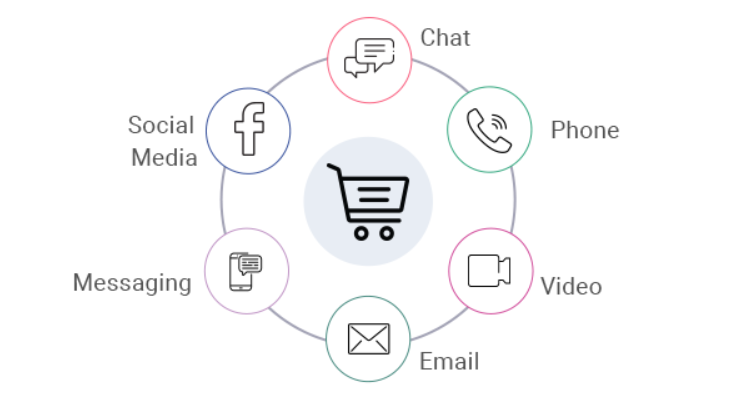Show:
Navigating Cross-border E-commerce: Challenges and Opportunities
Cross-border e-commerce (a.k.a. international online shopping) has become an integral part of the global economy.
As a seller, expanding your business across borders can seem appealing yet daunting. While reaching new customers worldwide has its perks, you also face complex regulations, delivery issues, and payment risks when going global.
If you’re going through the same dilemma right now, don’t worry. With some smart strategies, you can most certainly overcome these challenges.

In this article, we have covered everything there is to know about cross-border e-commerce. This includes the key difficulties you may encounter as well as the immense opportunities that international online retail presents so you can make informed decisions to grow globally.
That said, let’s dive right in!
Understanding Cross-border E-commerce
So what exactly is cross-border e-commerce? In simple terms, cross-border e-commerce refers to the online selling of products to buyers located in a different country than the seller.
The product could be a business selling to customers abroad directly through its website or via online marketplaces. This form of international online trade has transformed how consumers shop and businesses reach new markets.
In fact, cross-border shopping represents over 20% of global e-commerce today. In 2021 alone, around 52% of global online shoppers purchased goods from overseas web stores.
And with worldwide online sales expected to hit $8.1 trillion by 2026, international e-commerce presents massive potential for merchants, especially small businesses.
Just a decade or so ago, expanding overseas seemed impossible for small to medium businesses. High delivery costs, complex regulations, and lack of digital infrastructure posed steep barriers.
Yet with rising internet penetration, improving logistics networks, online payment systems, and trade agreements, exporting through e-commerce is now easier than ever.
The best part? — These factors will continue lowering cross-border trade barriers even further in the future.
Opportunities in Cross-border E-commerce
Cross-border e-commerce helps get your products in front of billions of potential new customers in untapped foreign markets.
That means, instead of vying for share regionally, you can leverage global demand to scale up sales rapidly.
However, you need to do thorough target market research to ensure you fulfill the overseas demands.
For example, you have to take into account consumer tastes, buying behavior, and market conditions as these can vary enormously worldwide.
Furthermore, you also have to understand that while Americans prefer credit cards, Chinese shoppers use digital payments, and Europeans want eco-friendly deliveries.
For successful cross-border selling, you have to understand and fulfill these nuances. On the bright side, though, you can customize products, pricing models, and propositions to appeal to distinct foreign customer needs.

Challenges Faced in Cross-border E-commerce
Expanding overseas online opens up vast opportunities but also poses some key difficulties. Let’s examine them one by one.
First things first, navigating e-commerce challenges, every country has distinct regulations around areas like product standards, consumer rights, duties, taxes, and more. Understanding and complying with multiple rulebooks is tough.
But, at the same time, you also don’t have any other choice because non-compliance generally leads to hefty fines or bans. So, staying up-to-date on laws and seeking expert advice is essential before selling cross-border.
The second key challenge businesses usually face in cross-border e-commerce is delivering efficiently across long distances while keeping shipping affordable.
To do this successfully, you have to choose the right overseas carriers, warehouse locations, and inventory management practices that have minimal impact on costs and customer experience.
Last but not least, handling different currencies and popular local payment modes like bank transfers or digital wallets also requires tactical considerations.
Getting paid internationally adds exchange rate volatility risks too for your cash flows. But with enough preparations and the right partnerships, you can definitely overcome these hurdles.
Cultural and Language Barriers
Selling to international audiences means understanding nuanced cultural preferences. From translation needs to etiquette, customer expectations vary from market to market.
That’s why, you’ll need multilingual product listings and customer support in native languages. Furthermore, you also need to identify if colors, imagery, or messaging will resonate locally.
Most importantly, you need to adapt your pricing models, invoicing preferences, payment options, and propositions for every region. To be successful, you have to localize your brand experience with geo-targeted websites, marketing, and partnerships.
While this is certainly a daunting task, if you make an effort to connect genuinely, you’ll definitely enjoy loyalty across borders as well.
Technology and Infrastructure
Selling globally through e-commerce demands having a robust technology infrastructure. Your systems should seamlessly handle international traffic, transactions, and fraud risks.
That means, you need to invest in solutions that optimize multi-currency processing, real-time global reporting, and localized experiences. In addition, you also need to provide support for cross-border payment methods like foreign credit cards, mobile wallets, and bank transfers.
Thankfully, all of these can be taken care of by leveraging tools that ease logistics like integrated shipping and inventory management software. With the right solutions and vigilance, the tech side of global selling can be easily managed without any hassle.
Market Entry Strategies
Choosing which overseas markets to prioritize and how to enter them crucially impacts cross-border success.
The best way to go about this is by first analyzing factors like market size, growth, competition, cultural fit, operational ease, trade policies, and political stability. And then, focus on the few prime regions only in the beginning.
Remember, selling directly through your website allows maintaining control but requires major localization. This is why you should consider partnering with established local players as resellers. Alternatively, you can also sell via international e-commerce marketplaces such as Amazon to acquire your first customers quickly.
With thorough groundwork on ideal territories and pragmatic entry plans, your global expansion plan can certainly turn into reality. You just need to remain flexible to adjust as per market demands as needed.

Compliance and Regulatory Issues
When selling overseas online, there are numerous complex customs rules, taxes, and compliance that must be taken into account. In fact, not being aware of trade agreements, tariffs, fees, documentation needs, and restrictions can spell trouble.
This is why you must get clarity on import-export regulations, product testing standards, labeling requirements, and intellectual property norms for target markets. If required, seek guidance from experts to avoid unwitting non-compliance, which can bring heavy penalties.
Before entering any cross-border market, factor relevant taxes into pricing strategies and have efficient processes for remittances. In addition, make sure to obtain necessary permits and certificates of origin.
For this, you can also leverage solutions that help efficiently track transnational shipments and produce compliant paperwork. The best way to do this is by partnering with experienced logistics providers familiar with cross-border trade formalities.
In short, with diligent research and the right partners, you can tackle regulatory and compliance challenges smoothly before sailing into foreign e-commerce.
Supply Chain and Logistics Optimization
Managing complex supply chains and deliveries is one of the biggest hurdles in cross-border e-commerce. Therefore, it’s crucial to optimize your logistics to provide satisfactory buyer experiences worldwide.
There are plenty of ways to do this. For starters, you can evaluate how to best structure your inventory and fulfillment across borders. Remember, real-time inventory visibility and order tracking capabilities are a must to coordinate global supply flows.
Secondly, you need to assess international shipping provider options thoroughly considering costs, delivery times, reliability, and reach.
Third, focus on reducing paperwork and customs clearance times. For this, you can consider using trade compliance automation tools and leverage low-duty routes.
Most importantly, you need to continuously monitor key logistics KPIs globally and identify bottlenecks. If required, you need to be ready to switch partners if you see a dip in the performance.
Logistics is a complex puzzle. But with strategic international infrastructure and shipment management, you can overcome this hurdle and attain cross-border e-commerce success.
Customer Experience and Support

Providing exceptional post-purchase experiences is crucial for earning trust and loyalty across borders. International customers expect reliable, localized support in preferred languages.
To fulfill this, you need to hire multilingual service teams to provide phone, email, and chat assistance in native tongues. Customers appreciate the effort to interact in their language.
In fact, it’s best to set up dedicated support channels based on time zones to promptly resolve overseas buyer queries. In addition, you can consider optimizing your website and mobile apps that easily allow your international buyers to switch languages and currencies.
Most importantly, be extremely transparent about shipping timelines, returns policies, and taxes during checkout.
Delivering such personalized, convenient experiences worldwide can boost customer satisfaction, referrals, and repeat purchases.
Data-driven Insights and Market Research
Expanding overseas requires closely understanding distinct market environments, trends, and buyer behaviors, which is why you need to leverage data analytics across websites, ads, marketplaces, and social channels to derive actionable inputs.
We recommend analyzing demand patterns, price elasticity, product preferences, purchasing habits, demographics, and competitor moves in target regions. This helps tailor strategies, pricing, and assortments accordingly.
Additionally, you can also track omnichannel analytics to identify high-potential marketing channels abroad. Monitor regional site traffic, conversion funnels, campaigns, and SKU performance closely to refine strategies.
All of these can help you to be prepared, test concepts quickly, and adapt your offerings for overseas markets.
Sustainability and Ethical Practices
Consumers worldwide are increasingly choosing brands that reflect their values. So as a global merchant, it is crucial to ensure high ethical standards and embrace sustainability.
To get started, you can consider implementing eco-friendly practices across operations – renewable energy in facilities, recycled packaging materials, and carbon offset shipments.
Be transparent through supplier codes of conduct published on your website. Share eco-impact reduction results in annual reports. Communicate regularly on responsible initiatives. And partner with non-profits working on causes important to your target buyers.
Leading brands that have successfully embedded social responsibility across global supply chains can provide inspiration on best practices.
Though we agree that this is quite challenging to execute, sustainable and ethical trade can help you earn stakeholder trust and even drive competitive advantage.
Conclusion
Expanding globally through cross-border e-commerce opens up immense potential but requires navigating hurdles too. Each foreign market poses its own set of complexities.
Yet with robust planning, research, localization, compliance, and logistics management, the obstacles can be overcome. The diverse opportunities to boost sales make the effort worthwhile.
Start small, learn quickly, and scale wisely. Leverage available solutions, services, and expert guidance. With perseverance and resilience, your worldwide e-commerce success is achievable.
About the author:
Dipen Visavadiya is a highly experienced SEO professional with a proven track record of success spanning 9+ years. His extensive knowledge of the IT, eCommerce, and SAAS domains has been instrumental in providing targeted and effective solutions for clients. Dipen specializes in assisting SAAS businesses in boosting sales through the use of advanced link-building and content marketing strategies.

 Return to Previous Page
Return to Previous Page








